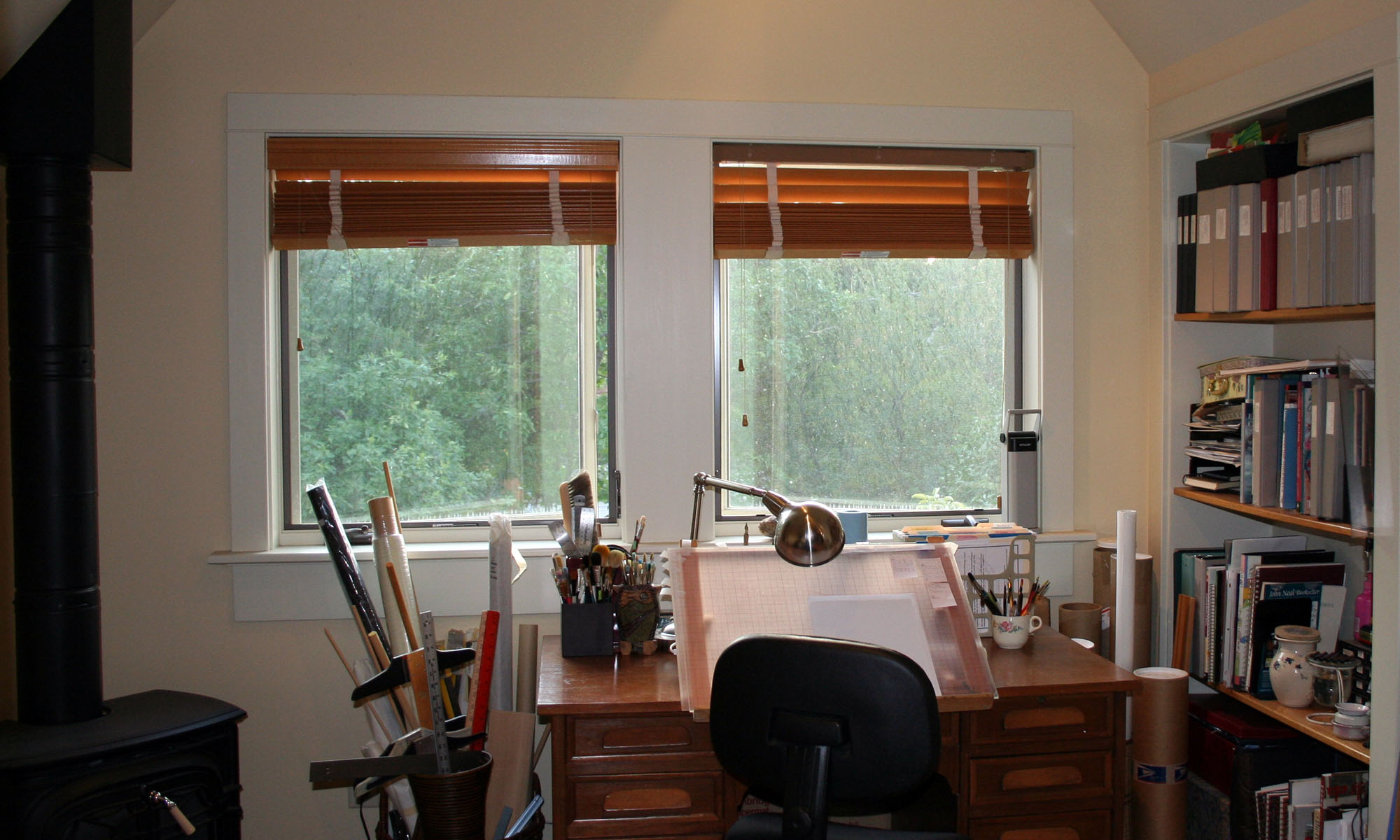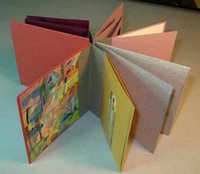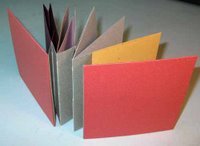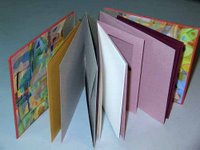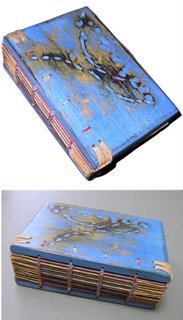I’m not a fan of tunnel books, but a current class assignment has led me to look at them more closely.
It’s often frustrating to look at images of tunnel books. You’re shown the cover, you see the sides, you see the sculptural aspects of the book, but only rarely do you get to see even an approximation of what one sees when one looks through the tunnel book.
Here are some of my favorite tunnel books that you can see online:
- Roberta Lavadour’s Harvest Moon, a luminous view of the moon with layers of twig branches covering the main image.
- A collaborative tunnel book made in Julie Chen’s class at Pyramid Atlantic. I like it that the square confines of the outer shape are breached.
- Tara Bryan’s World Without End, with the story on the accordion panels and the images in the tunnel. At roughly 3″ x 3″, it seems a little small for comfortable tunnel viewing, but since the story is on the outside, maybe that’s not as important as it might be otherwise.
- Ed Hutchin’s Grandma’s Closet — a great use of the tunnel structure. (Update Nov 2017: no longer on the internet except on Pinterest and as a rare book for sale.)
- Peter and Donna Thomas’s awesome Ukelele Tunnel Book, part of a series of uekele books. The back of a ukelele was sawed off to allow for the tunnel structure. The entire series is here. Although I found this book first, I list it last, so that the rest of the list wouldn’t be disappointment.
I don’t like tunnel books as much as I like other book structures, I think because it functions more as a sculpture than a book. You get the whole picture at once, and time doesn’t play the part that it does in books whose pages have to be turned and whose images and words appear serially. In a tunnel book, there are more things to see as you look around more, but that’s true of paintings and sculptures.
